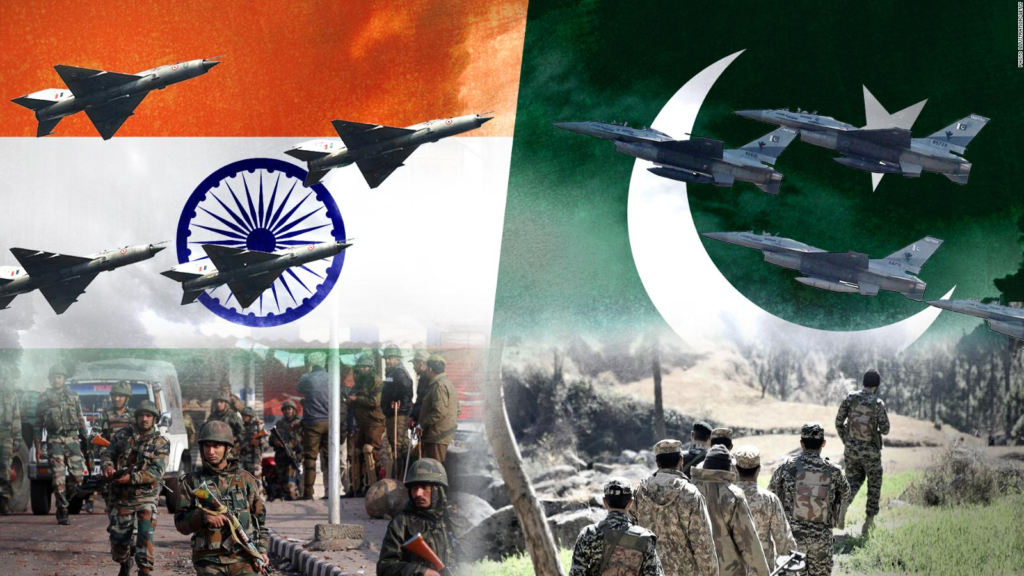In a significant development that has captured global headlines, India downs Pakistan’s JF-17 fighter jet over the sensitive Pulwama region in Jammu & Kashmir. The event, which occurred on May 7, 2025, marks one of the most critical military escalations between India and Pakistan since the Balakot strikes of 2019.
This blog offers a comprehensive 2,500-word breakdown of the incident, its strategic implications, and the political ripples caused in the subcontinent. We examine how India downs Pakistan’s aerial ambitions, counters cross-border terrorism, and reaffirms its air superiority with precision strikes under Operation Sindoor.
Section 1: How India Downs Pakistan’s Intrusion in Pulwama
On the morning of May 7, 2025, Indian surveillance systems picked up an incoming aerial target approaching Pulwama’s Pampore sector. Within minutes, the IAF scrambled interceptors and engaged the aircraft, which was later identified as a Pakistani JF-17 Thunder, a Chinese co-developed fighter jet.
Using a combination of Mirage 2000 and Su-30 MKI aircraft, India downs Pakistan’s JF-17 in a precise and coordinated maneuver. The jet was neutralized within Indian airspace, with debris recovered in Pampore, conclusively linking it to the Pakistan Air Force.
Section 2: The Strategic Importance of Pulwama Pampore
Pulwama is more than a location it’s a symbol. This is the same district where India suffered one of its worst terrorist attacks in 2019. The Pampore sector lies adjacent to vital security corridors and military bases, making this intrusion a red line for Indian defense.
By intercepting and eliminating the threat, India downs Pakistan’s attempts to test its aerial response threshold. This incident highlights India’s upgraded radar and aerial defense systems post-Rafale induction.
Section 3: What is Operation Sindoor?
Operation Sindoor is India’s latest air campaign launched in retaliation to the April 22, 2025, Pahalgam attack that left 26 civilians dead. The operation targeted nine high-value terrorist camps across Pakistan and PoK.
As India conducted precision strikes deep into Balakot, Kotli, and Muzaffarabad, India downs Pakistan’s capacity to harbor terror networks. These proactive strikes signaled a shift from diplomacy to decisive military response.
Section 4: A Timeline of Escalation
- April 22, 2025: Terror attack in Pahalgam kills 26.
- May 5–6, 2025: India launches Operation Sindoor, striking terror infrastructure.
- May 7, 2025: India downs Pakistan’s JF-17 in Pampore after it breached Indian airspace.
This timeline illustrates the quick transformation from internal tragedy to cross-border conflict.
Section 5: Pakistan’s Counterclaims
Shortly after Operation Sindoor, Pakistan’s military spokesperson claimed their air defense had shot down:
- 3 Indian Rafales
- 1 Sukhoi Su-30
- 1 MiG-29
- 1 Israeli Heron drone
However, Indian defense authorities categorically denied any losses, stating that India downs Pakistan’s narratives of counterattacks as baseless propaganda aimed at domestic audiences.
Section 6: Ground-Level Civilian Impact
The Pampore region, post the aerial skirmish, saw increased shelling along the LoC. Casualties have been reported on both sides:
- India: 7 civilian deaths, 35 injuries
- Pakistan: 8 civilian deaths, 30+ wounded
These figures show that while India downs Pakistan’s aerial threat, the fallout continues to harm innocents caught in the crossfire.
Section 7: Global Diplomatic Responses
The international community is watching closely:
- USA: Urged restraint from both nations
- Russia: Supported India’s anti-terror stance
- China: Called for peace but remained neutral
- UK and France: Condemned terrorism and supported India’s right to defense
Even as India downs Pakistan’s aggression militarily, diplomatic channels remain active to prevent further conflict.
Section 8: Military Readiness – How India Downs Pakistan’s Threats

The IAF’s recent upgrades have made Indian airspace nearly impregnable:
- Rafale fighter jets with Meteor missiles
- Israeli Harop drones for target acquisition
- Netra AEW&C systems for surveillance
- AI-enabled radar systems
Using this technological edge, India downs Pakistan’s air threats before they can cause damage.
Section 9: Psychological and Information Warfare
Both nations have taken the battle online:
- India shared videos of the jet wreckage
- Pakistan released simulated footage of Indian aircraft allegedly shot down
But India downs Pakistan’s disinformation campaign with satellite evidence and diplomatic transparency, gaining international credibility.
Section 10: Strategic Implications for the Subcontinent
This isn’t just about one jet. It’s about a changing doctrine:
- India’s move from strategic restraint to strategic retaliation
- Preemptive neutralization of aerial threats
- Assertive diplomacy backed by military might
Each time India downs Pakistan’s aggression, it sets a precedent for zero tolerance toward terrorism.
Section 11: Internal Political Reactions
Across India, the mood was one of unity:
- Politicians across party lines praised the IAF
- Public celebrations erupted in Pampore
- National media hailed Operation Sindoor as a success
By responding firmly, India downs Pakistan’s attempts to provoke instability before elections or major policy shifts.
Section 12: Lessons for Pakistan
Pakistan’s use of the JF-17 highlights several flaws:
- Limited stealth capabilities
- Inadequate jamming systems
- Outdated radar evasion tech
This incident proves India downs Pakistan’s overreliance on China-backed defense platforms.
Section 13: Air Superiority and Technological Edge
India’s current aerial strength includes:
- 36 Rafale jets
- 272 Su-30MKI
- Tejas Mk1A indigenous fleet
Through technology and tactics, India downs Pakistan’s ability to achieve any aerial success, especially in contested zones like Kashmir.
Section 14: Civil Society and Media Reactions
Citizens across India used social media to celebrate the success:
- #OperationSindoor trended globally
- Videos of the wreckage went viral
- Retired IAF officers provided expert commentary
These efforts ensure India downs Pakistan’s version of events in the media war as well.
Section 15: Potential for Escalation or Peace?
As of now, backchannel diplomacy has begun. But the following factors remain:
- Terrorist threats from across the border
- Possibility of further airspace violations
- Internal political pressures on both sides
Each time India downs Pakistan’s moves toward conflict, it also opens space for future peace talks on India’s terms.
Section 16: What This Means for National Security Doctrine
India’s military and political leadership are in alignment:
- Zero tolerance for terror
- No hesitation in crossing LoC if needed
- Diplomatic readiness to defend actions
With each event where India downs Pakistan’s aggression, the new normal for national security becomes clearer.
Section 17: Role of Defense Partnerships
India’s partnerships with nations like:
- France (Rafale, defense R&D)
- Israel (drones, missile systems)
- USA (intelligence sharing)
These alliances play a key role as India downs Pakistan’s offensive capabilities with collaborative superiority.
Section 18: Future Preparedness
Looking ahead, India is investing in:
- Next-gen fighter jets (AMCA)
- S-400 missile systems from Russia
- Expansion of drone and AI warfare
These systems ensure that whenever India downs Pakistan’s intrusions, it will do so faster, smarter, and cleaner.
Section 19: Economic Angle of Military Action
With defense budgets rising and indigenous manufacturing (Make in India), the event where India downs Pakistan’s JF-17 may fuel:
- Investor confidence in defense startups
- More recruitment in the armed forces
- Strengthened geopolitical leverage in South Asia
Section 20: The Message Is Clear
The downing of the JF-17 is not just a tactical win it is a statement. A reminder that India is no longer a reactive state but a proactive power.
By asserting its aerial dominance and refusing to tolerate any breach of sovereignty, India downs Pakistan’s provocations not just on the battlefield but in the global narrative.
The world watched as India downs Pakistan’s fighter jet, and in doing so, reinforced a doctrine: Peace through strength. Diplomacy through deterrence. And above all, a commitment to protect every inch of Indian territory on land and in the skies.















